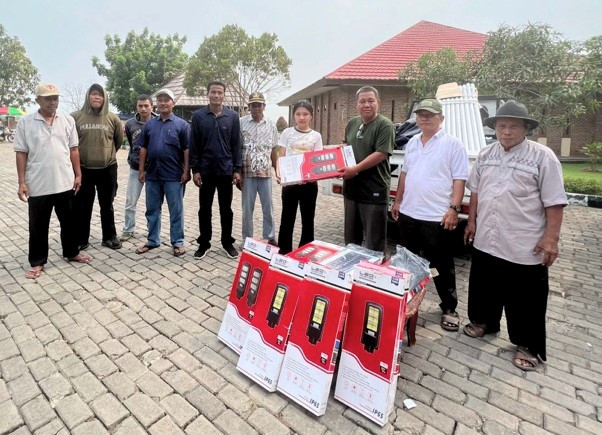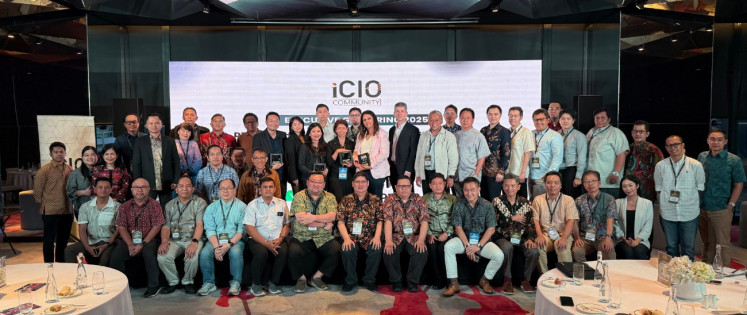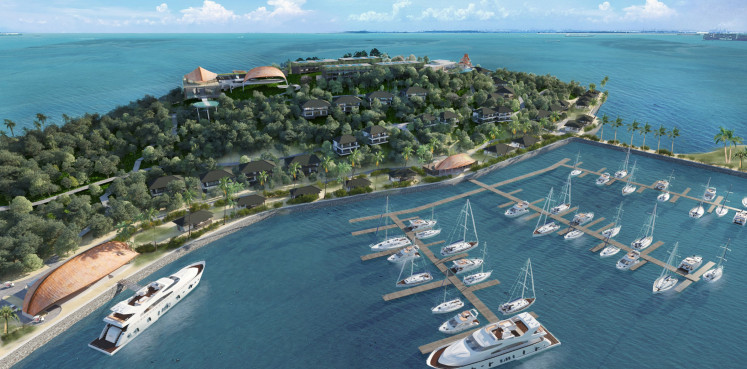Popular Reads
Top Results
Can't find what you're looking for?
View all search resultsPopular Reads
Top Results
Can't find what you're looking for?
View all search resultsSolar panels in Karawang brings light to new era of renewable energy in Indonesia
Change text size
Gift Premium Articles
to Anyone
T
he Ministry of Energy and Mineral Resources (EMR) reported that the country had hit an electrification rate of 99.40 percent by the end of 2021, indicating promising growth in power generation and development.
Despite the high electrification rate, achieving 100 percent energy access across Indonesia has proven to be a difficult task given its archipelagic landscape, with most villages almost inaccessible due to the lack of infrastructure. This obstacle affects not only people’s livelihoods, but also the country as a whole.
Segaran and Segarjaya in Karawang regency, West Java, are two of the 25 villages that have “underprivileged” status, even though they are renowned for being an archeological site and a pilgrimage destination. The scarcity of streetlights on local roads has left their residents unable to carry out daily activities in the evening.
To encourage renewable power generation to further energy transformation in the country, President Joko “Jokowi” Widodo passed Presidential Regulation No. 112/2022 on Accelerated Development of Renewable Energy for Electricity Supply.
In line with the regulation, community aid group Surya Untuk Rakyat (SURA) took the initiative to collect donations from individuals and companies, including PT Kanzaki Jaya Manggala, to help fund the installation of streetlights in Karawang’s Batujaya subdistrict.
SURA, founded by Kandice Kurniawan from Jakarta Intercultural School (JIS), has a mission to install solar panel streetlights in areas that lack adequate lighting.
“Hopefully through SURA, our company’s assistance can offer benefits to rural communities, especially Segaran and Segarjaya villages in Karawang," said Rudi, director at PT Kanzaki Jaya Manggala.
He added that the assistance was part of Kanzaki Jaya Manggala’s social and environmental responsibility program and supported the government's target to achieve net zero emissions by 2060.
“With the installation of the solar streetlights, the community is able to [be active] for a longer period of time, with better safety on the roads,” Kandice said.
She also explained that because the lights were powered by the sun, they reduced reliability on fossil fuels and contributed to a cleaner and greener environment. In addition, the solar-power streetlights helped reduce electricity bills and kept operating costs at a minimum for Segaran and Segarjaya.
“We, on behalf of the community, would like to thank Kandice’s initiative to donate solar lights to our area. Hopefully, with the help of these solar-powered lights, they will provide benefits to our community and also prevent danger and crime in the area,” said Segaran village secretary Wahyu Purnama.
The newly installed solar-powered streetlights has ushered in Indonesia’s transition to renewable energy into the area, which is helping to improve infrastructure across the archipelago, even to the most underprivileged communities.










